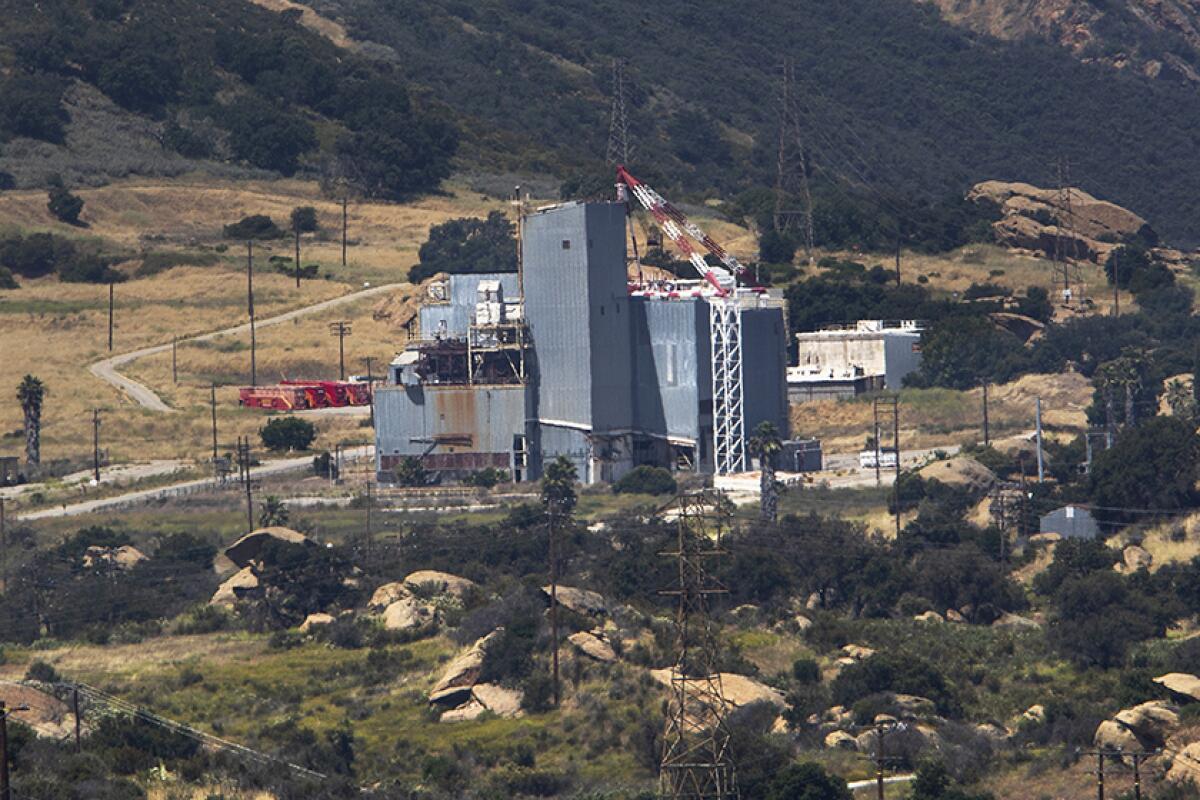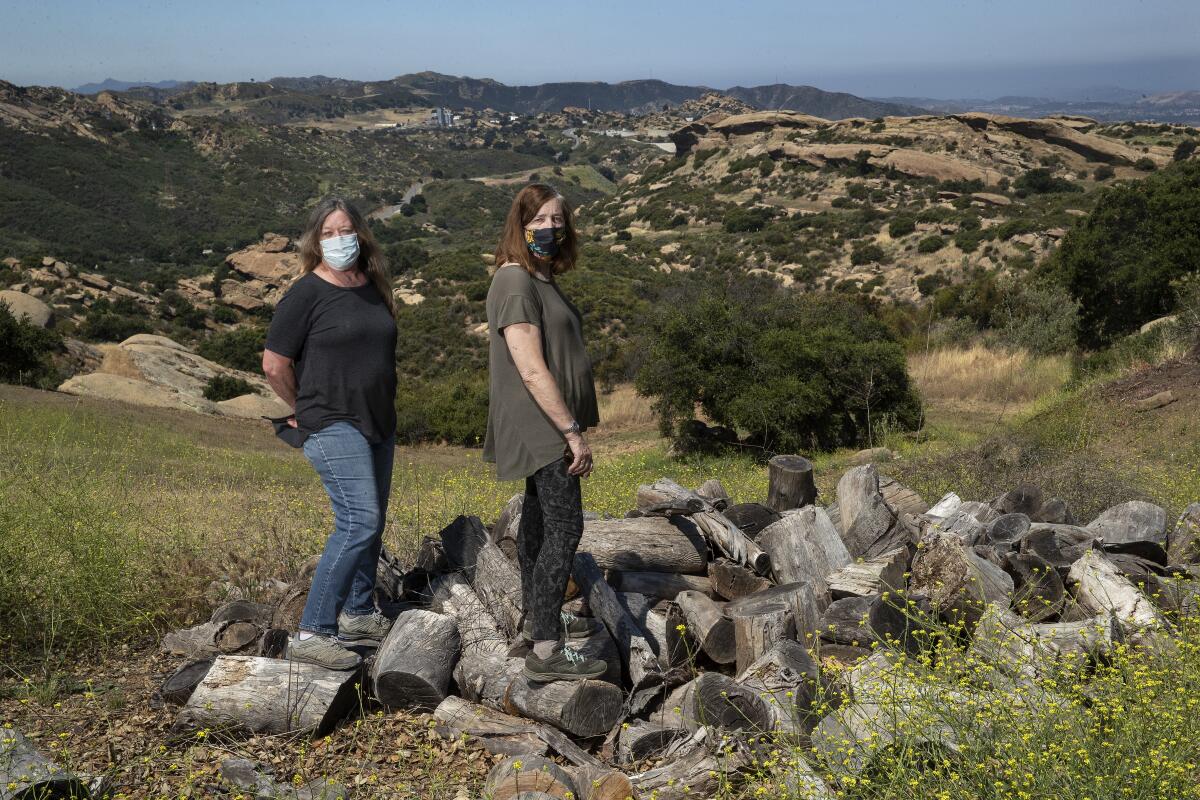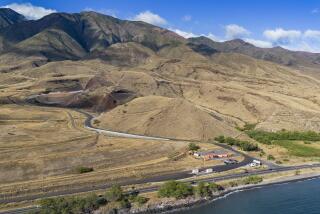NASA wants nuclear-contaminated Santa Susana site to be made a historic landmark

The site of America’s first nuclear meltdown — and subsequent cover-up — in the picturesque hills of Ventura County may soon join Hearst Castle, the cable cars of San Francisco, and the Santa Barbara Mission as an official landmark in the National Register of Historic Places.
In what some have described as a cynical attempt by a U.S. government agency to avoid a long-promised cleanup of toxic and radioactive contaminants, NASA has nominated the Santa Susana Field Laboratory for official listing as a traditional cultural property.
The nomination is expected to be taken up by the state Historic Resources Commission on Friday. The listing, according to the space agency, would protect Native American archaeological relics and cultural resources within the contaminated 2,850-acre research facility in the hills overlooking the west San Fernando Valley.
The proposal, announced in June, shocked area residents who had spent years demanding a cleanup. Nothing at the site should be considered for the registry, they say, until after nuclear and other contaminants have been removed, as required under a 2010 agreement signed by NASA and the U.S. Department of Energy.
“NASA’s proposal is beyond audacious,” said Denise Duffield, associate director of Physicians for Social Responsibility-Los Angeles. “There is no mention of the 1959 partial nuclear meltdown in its nomination application.”
In an interview, Peter Zorba, NASA’s Santa Susana Field Lab project director, said that adding the facility to the National Register “would not alter NASA’s cleanup responsibilities at the site.”
Today, the sprawling field lab stands as a poisoned reminder of another age, an era when the United States believed in the promise of atomic fuel, and the nation sought preeminence by landing on the moon and by building an arsenal of ballistic missiles.

Hidden within the chaparral and rocky peaks of the Simi Hills, the Santa Susana Field Lab conducted research that was critical to the nation’s Cold War ambitions, yet toxic to the Earth. The partial meltdown released radioactive gasses that the public was never warned about, and spent rocket fuel, heavy metals and other toxins contaminated the soil and groundwater.
More recently, it was the ignition point for the 2018 Woolsey fire, which caused devastation in both Ventura and Los Angeles counties.
Despite the pleas of area residents, who say they’ve suffered cancer and other ailments as a result of the lab’s activities, cleanup efforts have stalled for decades.
Now, NASA and a coalition of Native American groups have proposed the area be designated a traditional cultural district. The move has been opposed by critics, who fear that strict laws protecting Native American artifacts, combined with terms of the 2010 agreement, could make it difficult to clean up contamination.
The agreement, which applies to all the facility property controlled by its owners — NASA, the Department of Energy and Boeing — exempts officially recognized archaeological artifacts and sacred sites from its otherwise stringent cleanup requirements. That includes a natural cave festooned with prehistoric rock art and portions of the property still visited by Native Americans for religious purposes.
The Ventura County Board of Supervisors in July recommended that the state commission reject NASA’s nomination. “The board,” it said, “remains committed to preserving Native American historical and cultural resources to the extent doing so is consistent with protecting public health.”
The state commission’s ultimate decision will be forwarded to the U.S. National Park Service for review.
NASA also will have to contend with reality-TV stars Kourtney Kardashian and Kim Kardashian West, who have publicized the frustration of lab neighbors on their cable show and on Twitter.
They also reached out to the Trump administration for action.
“Almost overnight, the Kardashians moved this issue into a national spotlight,” said William Preston Bowling, founder of the Aerospace Contamination Museum of Education in Chatsworth. “These are also women who can pick up the phone and talk to President Trump, who seems to listen to celebrities.”
Whether they can hasten an end to decades of foot dragging, misleading claims, shaky agreements and lawsuits remains to be seen.
In May, the U.S. Department of Energy and the state Department of Toxic Substances Control signed a consent order to tear down 10 of the most radioactive buildings at the facility.
The action, which is underway, was heralded as part of an effort to reduce the risk of another wildfire roaring through the area and exposing surrounding communities and habitat to contaminated smoke and ash, as well as toxic runoff flowing into the headwaters of the Los Angeles River.
Gov. Gavin Newsom described it as “decisive action” that “represents a new and important chapter toward full cleanup.” But area residents quickly complained that the cleanup agreement failed to address 14 other buildings at the site.
“Removing parts of these 10 buildings will eliminate only about 0.001% of the contamination at the Santa Susana Field Laboratory,” Duffield said, “the vast majority of which is in the soil.”
Mike Nartker, a spokesman for the Department of Energy’s Office of Environmental Management agreed — up to a point.
“There is a greater urgency to demolish these buildings first,” he said, citing the contamination they could unleash in a wildfire or flooding.
The demolition work was expected to take about six months to complete, officials said.
They anticipate removing about 4,123 cubic yards of low-level radioactive waste and about 67 cubic yards of waste containing both low-level radioactive materials and toxic chemicals.
If all goes according to plan, the debris will be hauled to licensed commercial low-level-waste disposal facilities as far away as Utah, officials said.
In the meantime, officials responsible for cleaning up the site can’t agree on how clean the soil must be to be able to say with confidence that it does not pose a risk to human health or the environment.
Separately, Boeing, which owns much of the facility, halted demolition of its remaining five buildings at the site in 2013 pending resolution of a lawsuit filed by Physicians for Social Responsibility and the nonprofit antinuclear group Committee to Bridge the Gap.
That lawsuit hinges on Boeing’s refusal to dispose of debris in a licensed waste facility, according to court documents.
Little of this has set well with community activists, including Kardashian West.
“The Department of Energy’s decision to remove 10 buildings in the nuclear area of the Santa Susana Field Lab is a positive but small step forward in the cleanup,” she told the L.A. Times. “In order to protect the community, we are asking the DOE to comply with the agreement it signed in 2010 and fully clean up the soil, which is an even greater risk to health.
“If NASA and Boeing can then follow that lead,” she added, “families near Santa Susana like mine could finally have peace of mind we’re no longer at risk of exposure to its contaminants.”
It would also end what community activist Marie Mason described as “an absurd and vicious cycle for us: sitting in courtrooms forever and ever with nothing to show for it.”
The 1959 partial meltdown occurred when a reactor at the facility spewed colorless and odorless radioactive gasses into the atmosphere.
Five weeks later, the Atomic Energy Commission published a news release indicating that “a parted fuel element had been observed” but that there was no evidence of radioactive releases or unsafe operating conditions at the facility, which employed several thousand people.
Details of the incident were not disclosed until 1979, when a group of UCLA students discovered documents and photographs that referred to a problem at the site involving a “melted blob.”
Radioactive emissions from the accident could have resulted in 260 to 1,800 cases of cancer within 62 miles of the site over a “period of many decades,” according to a study released in 2006.
NASA and Boeing disputed the study’s findings, saying it was based on miscalculations and faulty information.
“There’s no end to this saga,” Bowling said with a sigh. “And the agencies and companies involved seem to think that we’ll eventually lose steam and back off.”







